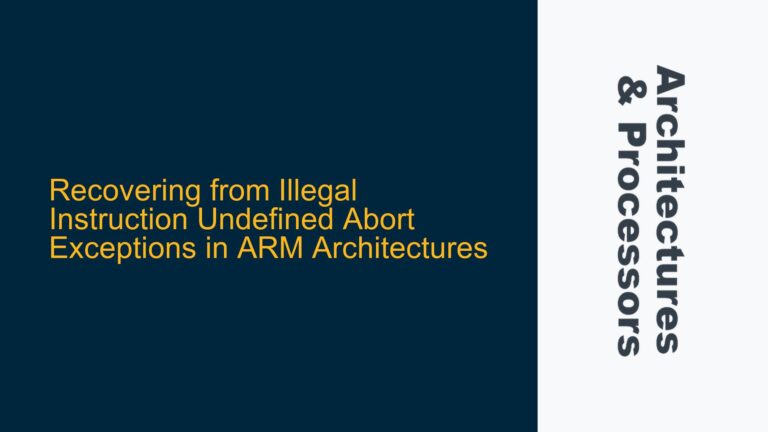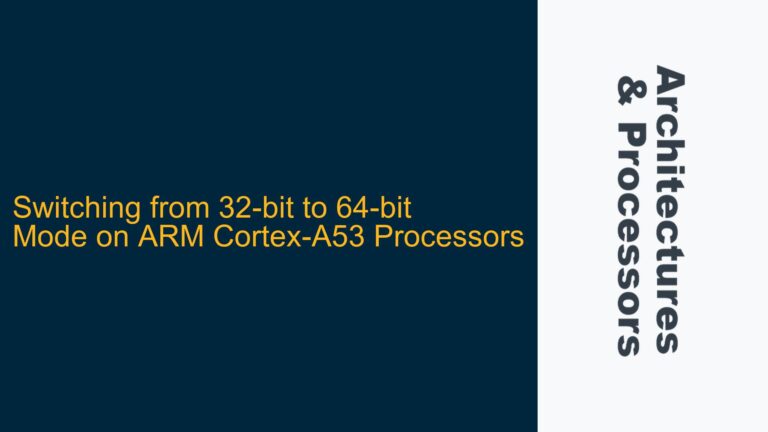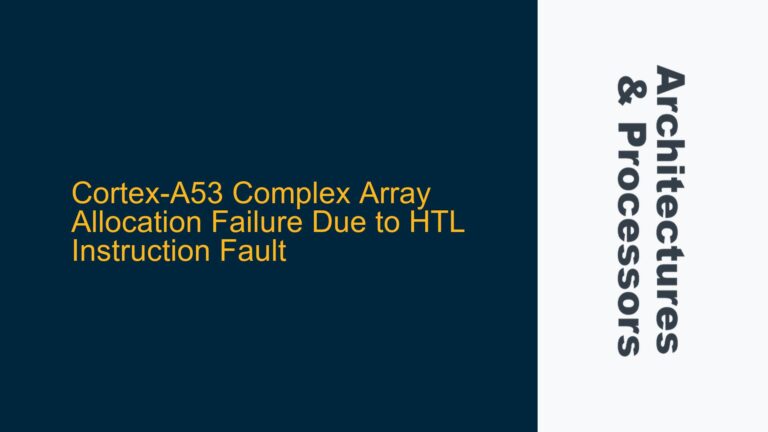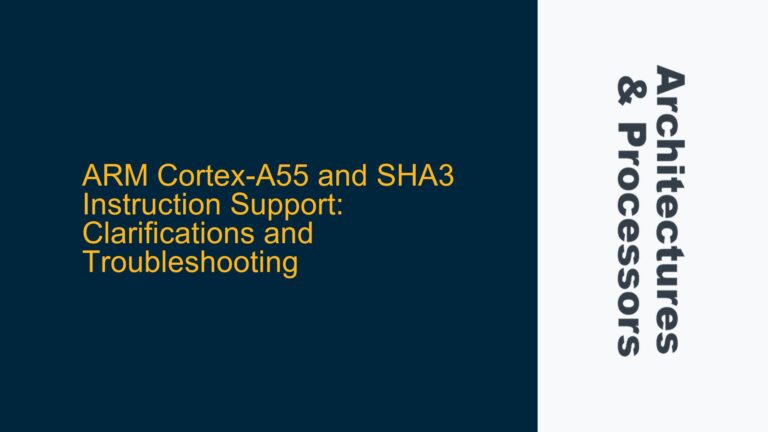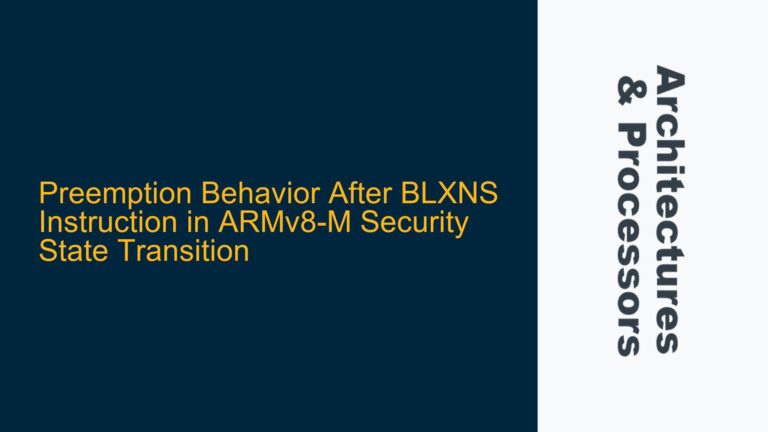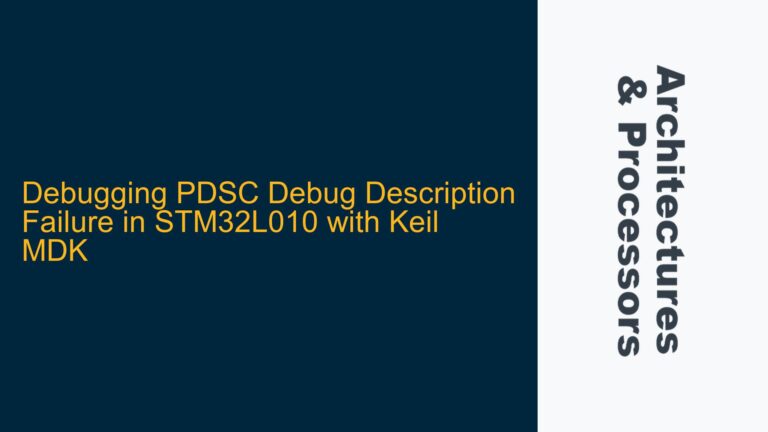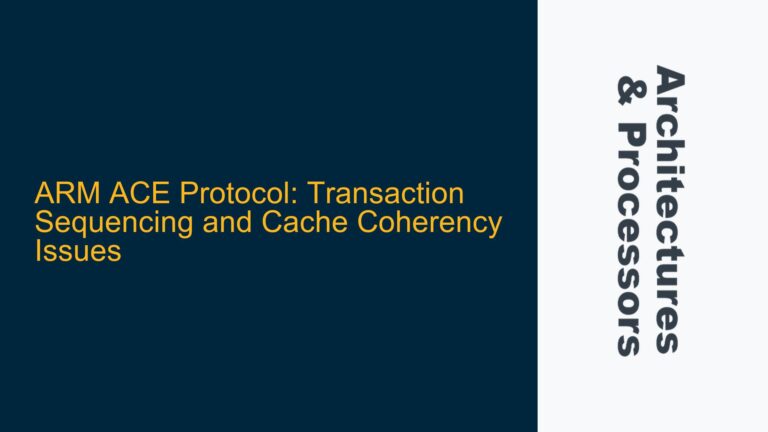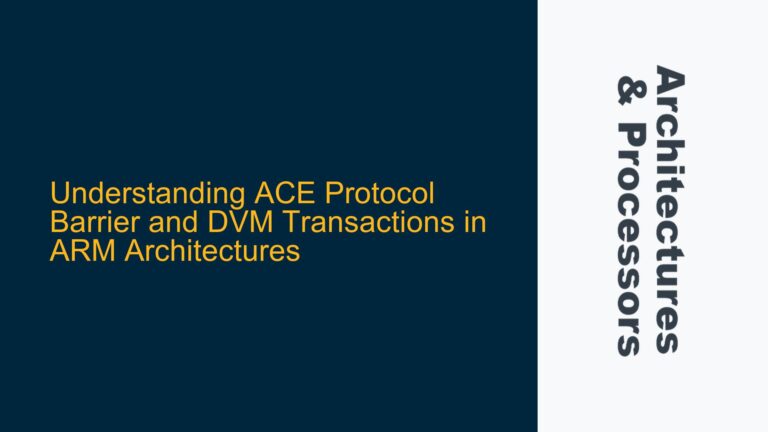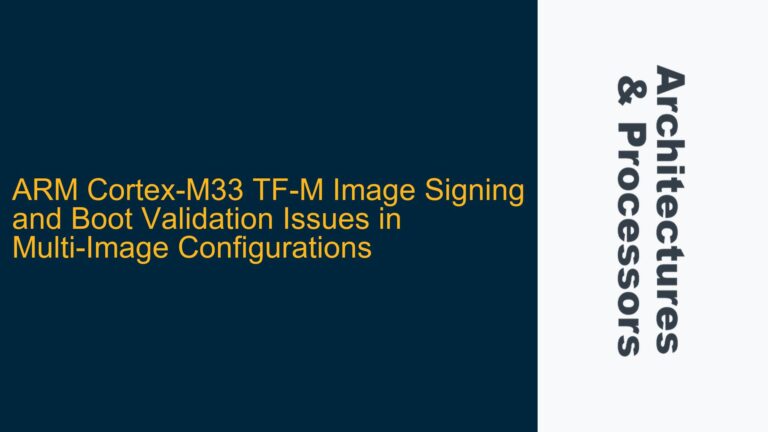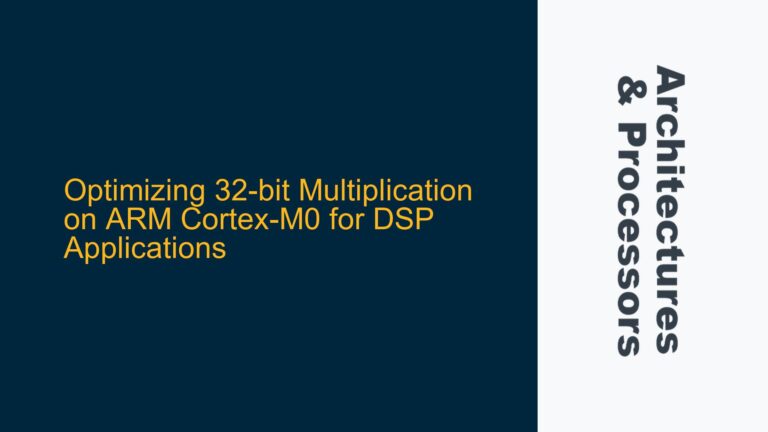Recovering from Illegal Instruction Undefined Abort Exceptions in ARM Architectures
ARM Cortex Pipeline Corruption Leading to Illegal Instruction Exceptions Illegal instruction exceptions in ARM architectures, particularly those arising from Undefined Abort exceptions, are often indicative of severe underlying issues in the system. These exceptions occur when the CPU encounters an instruction that it cannot decode or execute, which may be due to corruption in the…
